About Lakenheath Lancers
An American High School based at RAF Lakenheath, Brandon, Suffolk
School Mascot – Lancer
School Colors – Red and Blue
Brought to you from the Class of 76
This Special place was designed for All the Alumni to keep in touch
This was forward through many people and then Debbie Dabbs forwarded it to me for the site. We thought many might be interested in the History of Lakenheath.
RAF LAKENHEATH has been an air base for more than 50 years. The area’s affiliation with military units predates even the earliest aircraft. Iron Age and Celtic warriors watered their horses at the base’s pond. Roman legionnaires were garrisoned nearby and evidence of a Roman villa has been found beneath what is now RAF Lakenheath High School. The history continues even further back, almost rendering the term “Roman” a contemporary word.
Primordial seas that once covered England laid down layers of chalk several hundred feet thick over most of East Anglia. As the waters retreated, glacial activity pushed sands southward. The glacial retreat left East Anglia with several fresh-water ponds fed by underground springs bubbling up through fissures in the chalk layers, as well as a layer of soil capable of nurturing vegetation.
One of those springs still exists today and has been a fresh-water source for at least 8,000 years. Evidence of occupation near Caudle Head Mere (a Saxon term), more commonly known as Peacekeeper Park, can be found as early as the Mesolithic (Middle Stone Age) period. Flint tools dating back nearly 8,000 years have been found throughout RAF Lakenheath, indicating that early man found the area not only habitable, but capable of supporting domestic animals.
As Neolithic (New Stone Age) and Bronze Age populations flourished around Lakenheath, farms and domestic animal populations likewise increased as attested by the numbers of animal bones found in sites throughout the base. The Neolithic flint mine at Grimes Graves, located about 12 miles from the base, proved to be a valuable commodity for the local area. Axes, spear and arrow heads, and other tools were fashioned from the flint mined in the area and were used extensively throughout East Anglia. The number of Bronze Age tumuli, or burial mounds, surrounding RAF Lakenheath also suggest a large Bronze Age population throughout the county.
During the Iron Age, the Iceni (pronounced Ikeenee), a Celtic (pronounced Keltik) tribe included the greater Lakenheath area as part of its territory. The Celts were a very hardy people and were renown as fierce warriors. Their art work, particularly in stone and precious metals, is some of the most beautiful found anywhere in the world, examples of which have been found on RAF Lakenheath during recent excavations.The Iceni settled in East Anglia during the Iron Age and remained in the area throughout the Roman occupation. Incidentally, the Iceni were led by a flamboyant and rather charismatic queen named Boudicea who, when pressed by Roman taxation, rallied other Celtic tribes against the early Romans in A.D. 61 and ransacked several large settlements including Colchester and Londinium (London) before being defeated by Roman legions near Salisbury.
Several Iron Age (500 – 300 B.C.) and Romano-Celtic (300 B.C. – A.D. 400) sites have been found on RAF Lakenheath, evidence that the area was still largely habitable in spite of overgrazing caused by large groups of domestic herds. Roman pottery and bronze have also been found throughout the base, suggesting that Lakenheath may have been a strategic point for legionnaires in the area. The old Brandon turnpike, which originally ran through the middle of Hangar 7, was a Roman thoroughfare and connected several forts south with a number of Roman settlements in the north. Roof tiles from the Roman period have been found near RAF Lakenheath High School, suggesting that a Roman villa existed on the high ground overlooking the mere.
The Roman legions departed Britain during the mid-fifth century in order to protect the crumbling empire. Other settlers, largely tribes known as the Jutes, Angles, Goths, and Saxons, gradually migrated into East Anglia from northern Europe. Like the Celts and Romans before them, the Anglo-Saxons found the drier climates of East Anglia favorable to those of northern Europe and established several settlements between Bury St. Edmunds and Thetford. The fresh waters of Caudle Head Mere attracted a large population of settlers. Large amounts of Anglo-Saxon pottery and artifacts have been found on RAF Lakenheath, particularly near the pond itself. Recent excavations have found something rather extraordinary.
Between 1958 and 1997, Suffolk County archaeologists paid close attention to the area surrounding the hospital and found other Saxon skeletons as newer facilities were constructed on the southwest side of the base. But the best was yet to come.
During the morning hours of July 9, 1997, a tractor dug its first bucketful of dirt on softball field number one (across the street from the base library) in preparation for a new airmen’s dormitory. Typical of any construction activity on RAF Lakenheath, two Suffolk County archaeologists monitored the tractor’s activities and soon noticed bone fragments.
A hasty survey of the hole indicated a possible Saxon grave, and construction was temporarily halted. As archaeologists surveyed the area, they identified perhaps a dozen graves from the same period and began excavating the site.
The find proved to be phenomenal as two full-time crews from the Suffolk Archaeological Unit unearthed more than 170 Anglo-Saxon graves, giving RAF Lakenheath the distinction as being one of Britain’s largest excavated Anglo-Saxon cemeteries.
Dating from the 5th-7th centuries, the cemetery was probably a burial site for a large Saxon settlement near the pond or possibly in the Anglo housing area. Further, the settlement would have resembled the one reconstructed at West Stow. Regardless, the cemetery will tell archaeologists and historians a great deal of information about the Anglo-Saxons in the Lakenheath and Eriswell area.
Today, in spite of subsequent invasions by the Vikings, Danes and Normans, East Anglia still bears numerous signs of Anglo-Saxon culture in the forms of words, town names and church architecture. The base, which takes its name from nearby Lakenheath village, was derived from the Saxon word Lokenhyte which means the “landing place of Laka’s People.” Finally, British and Americans alike share the same language left by the Angles – Anglisch.
Between the 5th-9th centuries, the Danes and Vikings invaded parts of England and left a significant imprint on Saxon culture. The Vikings established a fortress in Thetford and made their way around the sandy areas of Lakenheath. While no Viking or Danish sites have been excavated on RAF Lakenheath, their presence cannot be discounted. The Normans, however, left a huge imprint throughout East Anglia. The Normans, who invaded Britain from France in 1066, quickly established temporary and later permanent settlements in Thetford, Bury St. Edmunds, and other strategic locations.
With Germany again making overtones of another military buildup, the Royal Air Force began searching for suitable aerodrome locations throughout East Anglia. Mildenhall and Feltwell were initially chosen as operational sites with construction beginning in the mid 1930s. When the war broke out, the RAF identified a need for additional sites and chose Lakenheath Warren as a suitable area for a decoy airfield. A number of dummy aerodromes, or “Q-Sites,” were developed to confuse enemy aircraft. False runway lights and aircraft made of plywood were quickly constructed near what is now the rod and gun club and actually succeeded in luring Luftwaffe crews away from nearby RAFs Mildenhall and Feltwell, as German crews bombed or strafed RAF Lakenheath on at least five different occasions. Still, despite RAF Lakenheath’s success as a dummy site, the RAF continued with plans to construct an airfield beginning in 1940.
In late 1940, engineers began constructing the new airfield according to Air Ministry standards. By early 1941, three runways in an “A-Frame” pattern had been completed with one 3,000-foot runway at 246-degrees and two 2,000-foot runways at 186 degrees and 322 degrees, respectively. Also constructed were two T2 hangars, one B1 type hangar, and 36 heavy-bomber hardstands. RAF Lakenheath opened in November 1941 as a satellite airfield for RAF Mildenhall as part of No. 3 Group. The airfield’s first occupant was No. 20 Operational Training Unit on temporary duty from Lossiemouth, Scotland. Flying Vickers Wellington Mk lc aircraft, No. 20 trained scores of aircrews in combat tactics before moving back to Scotland in January 1942. Between February and April 1942, No. 149 Squadron moved to RAF Lakenheath from RAF Mildenhall and began flying combat operations over occupied Europe in Stirling Mk III medium bombers. By the end of 1943, Lakenheath was functioning as an independent operational unit.
A second unit arrived at Lakenheath June 20, 1943. Flying Vickers Wellington Mk X aircraft, No. 199 Squadron began flying combat operations almost immediately, most of them involving sea mining operations. By the end of the month, the squadron had converted to Short Stirling medium bombers and both squadrons participated in the raid on Peenemunde Aug. 17, 1943, causing heavy damage to Germany’s “V” Weapon development center. By mid-1944 both squadrons had departed to other stations, with Lakenheath serving in a support role until the RAF closed the runways for construction to facilitate the arrival of British or American heavy bombers.
RAF Lakenheath reopened in the spring of 1947 and began receiving British support and instruction units. A top secret memo from the Air Ministry July 28, 1948, however, would have a permanent impact on the station. It stated that Lakenheath was to be immediately prepared to receive an American B-29 group of 30 aircraft and 750 personnel. By mid-August, elements of the 2nd Bombardment Group had arrived as a show of force to the Soviet Union who were espousing threats of expansion into western Europe. Between August 1948 and January 1960, a number of bomber and fighter bomber units were temporarily assigned to Lakenheath as part of Strategic Air Command’s Cold War rotation. Further, the U.S. Air Force assumed administrative control of the base May 1, 1951, when SAC’s 3909th Air Base Group activated to support the unit rotations.
With Germany again making overtones of another military buildup, the Royal Air Force began searching for suitable aerodrome locations throughout East Anglia. Mildenhall and Feltwell were initially chosen as operational sites with construction beginning in the mid 1930s. When the war broke out, the RAF identified a need for additional sites and chose Lakenheath Warren as a suitable area for a decoy airfield. A number of dummy aerodromes, or “Q-Sites,” were developed to confuse enemy aircraft. False runway lights and aircraft made of plywood were quickly constructed near what is now the rod and gun club and actually succeeded in luring Luftwaffe crews away from nearby RAFs Mildenhall and Feltwell, as German crews bombed or strafed RAF Lakenheath on at least five different occasions. Still, despite RAF Lakenheath’s success as a dummy site, the RAF continued with plans to construct an airfield beginning in 1940.In late 1940, engineers began constructing the new airfield according to Air Ministry standards. By early 1941, three runways in an “A-Frame” pattern had been completed with one 3,000-foot runway at 246-degrees and two 2,000-foot runways at 186 degrees and 322 degrees, respectively. Also constructed were two T2 hangars, one B1 type hangar, and 36 heavy-bomber hardstands. RAF Lakenheath opened in November 1941 as a satellite airfield for RAF Mildenhall as part of No. 3 Group. The airfield’s first occupant was No. 20 Operational Training Unit on temporary duty from Lossiemouth, Scotland. Flying Vickers Wellington Mk lc aircraft, No. 20 trained scores of aircrews in combat tactics before moving back to Scotland in January 1942. Between February and April 1942, No. 149 Squadron moved to RAF Lakenheath from RAF Mildenhall and began flying combat operations over occupied Europe in Stirling Mk III medium bombers. By the end of 1943, Lakenheath was functioning as an independent operational unit.
Today, in spite of subsequent invasions by the Vikings, Danes and Normans, East Anglia still bears numerous signs of Anglo-Saxon culture in the forms of words, town names and church architecture. The base, which takes its name from nearby Lakenheath village, was derived from the Saxon word Lokenhyte which means the “landing place of Laka’s People.” Finally, British and Americans alike share the same language left by the Angles – Anglisch.Between the 5th-9th centuries, the Danes and Vikings invaded parts of England and left a significant imprint on Saxon culture. The Vikings established a fortress in Thetford and made their way around the sandy areas of Lakenheath. While no Viking or Danish sites have been excavated on RAF Lakenheath, their presence cannot be discounted. The Normans, however, left a huge imprint throughout East Anglia. The Normans, who invaded Britain from France in 1066, quickly established temporary and later permanent settlements in Thetford, Bury St. Edmunds, and other strategic locations. With Germany again making overtones of another military buildup, the Royal Air Force began searching for suitable aerodrome locations throughout East Anglia. Mildenhall and Feltwell were initially chosen as operational sites with construction beginning in the mid 1930s. When the war broke out, the RAF identified a need for additional sites and chose Lakenheath Warren as a suitable area for a decoy airfield. A number of dummy aerodromes, or “Q-Sites,” were developed to confuse enemy aircraft. False runway lights and aircraft made of plywood were quickly constructed near what is now the rod and gun club and actually succeeded in luring Luftwaffe crews away from nearby RAFs Mildenhall and Feltwell, as German crews bombed or strafed RAF Lakenheath on at least five different occasions. Still, despite RAF Lakenheath’s success as a dummy site, the RAF continued with plans to construct an airfield beginning in 1940.In late 1940, engineers began constructing the new airfield according to Air Ministry standards. By early 1941, three runways in an “A-Frame” pattern had been completed with one 3,000-foot runway at 246-degrees and two 2,000-foot runways at 186 degrees and 322 degrees, respectively. Also constructed were two T2 hangars, one B1 type hangar, and 36 heavy-bomber hardstands. RAF Lakenheath opened in November 1941 as a satellite airfield for RAF Mildenhall as part of No. 3 Group. The airfield’s first occupant was No. 20 Operational Training Unit on temporary duty from Lossiemouth, Scotland. Flying Vickers Wellington Mk lc aircraft, No. 20 trained scores of aircrews in combat tactics before moving back to Scotland in January 1942. Between February and April 1942, No. 149 Squadron moved to RAF Lakenheath from RAF Mildenhall and began flying combat operations over occupied Europe in Stirling Mk III medium bombers. By the end of 1943, Lakenheath was functioning as an independent operational unit.
Several Iron Age (500 – 300 B.C.) and Romano-Celtic (300 B.C. – A.D. 400) sites have been found on RAF Lakenheath, evidence that the area was still largely habitable in spite of overgrazing caused by large groups of domestic herds. Roman pottery and bronze have also been found throughout the base, suggesting that Lakenheath may have been a strategic point for legionnaires in the area. The old Brandon turnpike, which originally ran through the middle of Hangar 7, was a Roman thoroughfare and connected several forts south with a number of Roman settlements in the north. Roof tiles from the Roman period have been found near RAF Lakenheath High School, suggesting that a Roman villa existed on the high ground overlooking the mere.
As Neolithic (New Stone Age) and Bronze Age populations flourished around Lakenheath, farms and domestic animal populations likewise increased as attested by the numbers of animal bones found in sites throughout the base. The Neolithic flint mine at Grimes Graves, located about 12 miles from the base, proved to be a valuable commodity for the local area. Axes, spear and arrow heads, and other tools were fashioned from the flint mined in the area and were used extensively throughout East Anglia. The number of Bronze Age tumuli, or burial mounds, surrounding RAF Lakenheath also suggest a large Bronze Age population throughout the county.
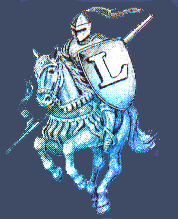
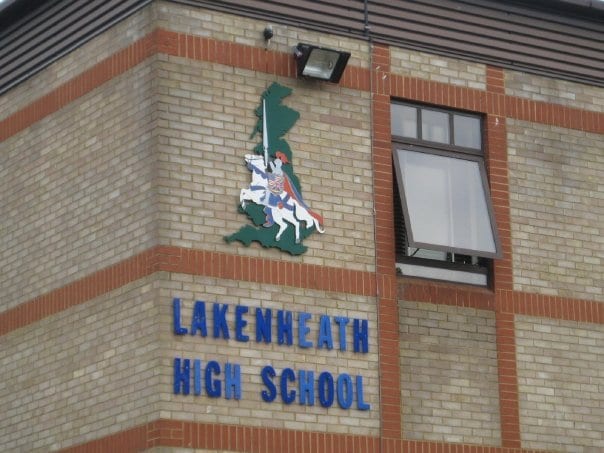
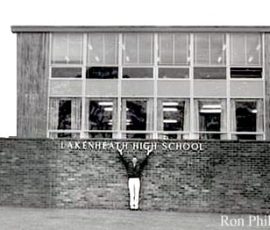

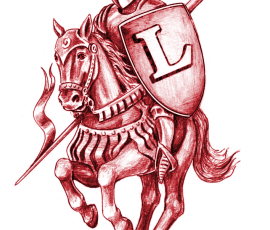
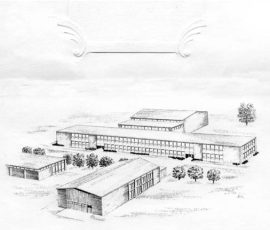
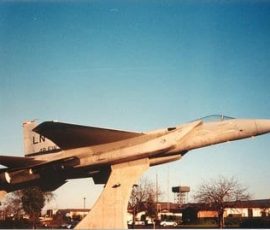
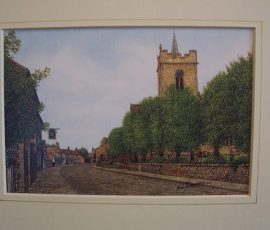

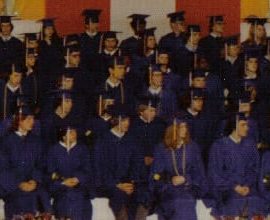
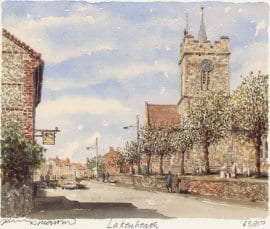
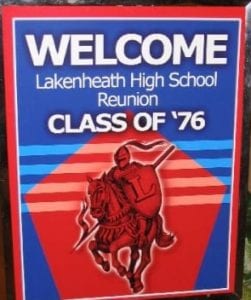
Served in administrative capacities at RAF Lakenheath from May 6th, 1967 to May 6th, 1970. Along time ago. Ironically, I was picked along with other teammates to play baseball representing our base against other American/RAF bases. I.E. RAF Bentwaters, RAF Alconbury, Upper Heyford, just to name a few. I was there as a 21 year old, left a more mature and grateful person due to my 3years of experience. Went home, back to St. Louis as a 23 year old, ready, for even more new experiences. Made alot of English friends too. RAF Lakenheath, was home away from home……..
I attended high school 1984-1985 but graduated from my school in the states which treated my senior year as a year of foreign study. Good times and good friends.
I went to the 7th grade through almost the end of my Sophomore year at LHS. My sister graduated there in 1964…My Dad, worked in the mess hall on Lakenheath and on Mildenhall base.We lived in Brandon, Weeting and Aspal Park. We were there when President John Kennedy was assassinated. Those were scary times. I am trying to remember our fight song for the Lancers but my mind is a blank. If anyone can guide me in the right direction to find a recording of it I would be forever grateful. Such good memories.